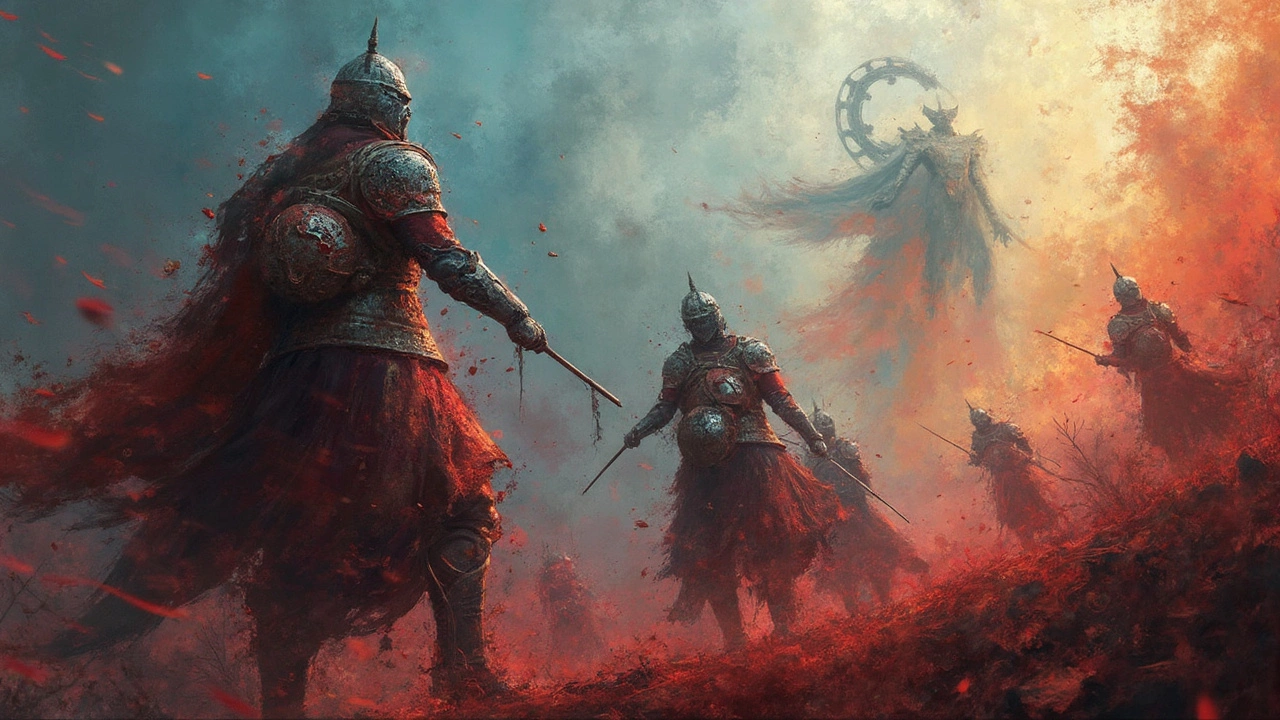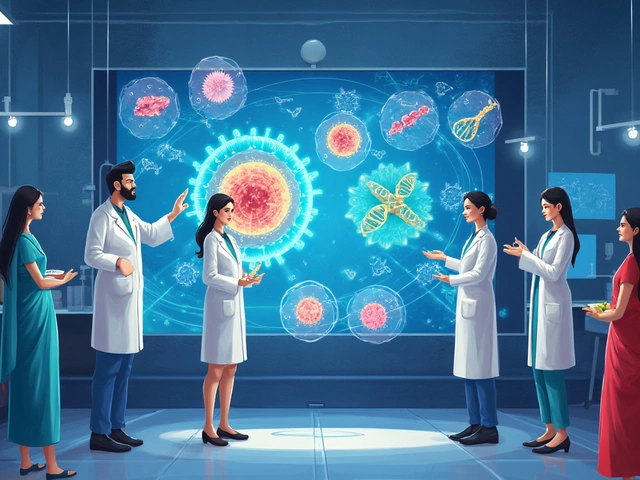
Cancer. Just saying the word can shake you up a bit. It's like when my kids panic at the sight of broccoli on their dinner plates—not thrilling. But what's worse is realizing some cancers are particularly tricky. So, why are certain cancers labeled 'the worst'? It's all about the challenges in treating them and the impact they have.
Let's kick off with lung cancer. It's a biggie, plain and simple. More people are diagnosed with lung cancer than any other kind. You'd think quitting smoking would be an easy fix, but genetic factors often complicate things. The kicker? Many folks don't have noticeable symptoms until it's already advanced.
Then there's pancreatic cancer. It sneaks up without much noise, kinda like when my kids decide they're too quiet, and I just know they’re up to something. It spreads quickly, yet getting an early diagnosis is a bit like finding a needle in a haystack. That's why it's sometimes called the silent killer.
- Understanding Lung Cancer
- Pancreatic Cancer: The Silent Killer
- Brain Cancer Complexities
- Survival Odds and Challenges
- Hope on the Horizon: Advances and Promising Research
Understanding Lung Cancer
Lung cancer is seriously one of the top contenders when we talk about tough cancers. It's not just about puffing on those ciggies anymore. While smoking plays a huge part, even non-smokers can develop lung cancer. It’s surprising, right? There’s a genetic twist to it that’s out of our control.
So, what makes this cancer such a beast? One big issue is how sneaky it is. Symptoms like a persistent cough, breathing problems, or chest pain can be easily mistaken for other issues. By the time someone notices, the cancer might be well into its later stages.
When it comes to treatment, it’s a rollercoaster due to the cancer usually spreading swiftly. Options often include surgery, chemotherapy, and radiation, depending on how far it's progressed when diagnosed. The key is early detection, but here’s the kicker – only about 16% are caught at an early stage.
| Fact | Detail |
|---|---|
| New Cases in the U.S. | About 235,000 per year |
| Leading Cause of Cancer Death | Yes, it is the top cause |
On a brighter note, research into targeted therapies and immunotherapies is gaining steam. These newer treatments aim to give personalized care rather than the one-size-fits-all approach, offering a bit of hope in this tough fight against lung cancer.
Pancreatic Cancer: The Silent Killer
Out of all the cancers, pancreatic cancer truly lives up to its nickname—the Silent Killer. This isn't just because it has a knack for keeping quiet at first; it’s a late bloomer when it comes to symptoms. By the time it makes its grand appearance, it’s often already spread to other parts. For many, it’s found during other routine exams or when symptoms like jaundice or sudden weight loss become too obvious to ignore.
The pancreas is a bit of a homebody, sitting snugly in your abdomen. But don’t let its hidden location fool you—this organ plays a big role in digestion and regulating blood sugar. When cancer invades this region, it affects these functions. The most common type is pancreatic ductal adenocarcinoma, and diagnosing it early is tough, which complicates treatment.
So what makes this type of cancer particularly nasty? Low survival rates. Here’s a stat that hits hard: only about 10% of people with pancreatic cancer survive for five years after being diagnosed. And it’s not for lack of trying; it’s just that treatment is a real challenge.
- Diagnosis: Often, there's no routine screening for this. Scans like CT or MRI may help, and sometimes there’s a biopsy involved to confirm things.
- Treatment: Surgery is usually the best bet, but it's only an option for about 20% of patients. Chemo and radiation try to keep the growth in check and manage symptoms.
Hope isn’t completely lost, though. There’s some interesting research out there testing new drugs or combinations, aiming to boost those survival rates. And who knows? What’s bleak today might lead to breakthroughs tomorrow. It’s why staying informed and talking to healthcare providers about any concerns is crucial. Don’t wait for symptoms to act; staying proactive can sometimes make all the difference.

Brain Cancer Complexities
Brain cancer is like that relentless video game level you just can't beat. It's complicated, misleadingly small on a screen, and there's so much at stake. When your brain, the body's main control center, gets hit with cancer, everything else can go haywire. That’s what makes brain cancer one of the toughest nuts to crack.
First off, the term brain cancer refers to different types of tumors, both benign and malignant. The most notorious among them is glioblastoma, which is known for being aggressive and fast-growing. You might have heard of it from news stories or personal anecdotes, and that's because it’s quite common.
One major headache in treating brain cancer is that the blood-brain barrier acts as a super-strict bouncer. It keeps harmful substances out, which is usually great but can be a nightmare for treatment. Most drugs can't cross this barrier easily, making direct treatment a real challenge.
Symptoms are another tricky part. They can vary hugely depending on the tumor's location. We're talking anything from headaches to seizures, mood swings, or even changes in speech. This broad range of symptoms can lead to late diagnosis, which is something no one wants to hear.
Here are some common symptoms of brain cancer:
- Persistent headache
- Unexplained nausea or vomiting
- Vision problems
- Gradual loss of sensation in an arm or a leg
- Difficulty with balance
Despite these complexities, there's some hope on the horizon. Research is ongoing, and new treatments, including targeted therapies and improved imaging techniques, are showing promise. Plus, innovative immunotherapy approaches are popping up, offering a glimmer of hope for many.
Overall, while brain cancer might seem like an unbeatable level, every year brings new insights that help tip the scales just a little more in our favor. It's a reminder that even when things look bleak, progress is quietly being made.
Survival Odds and Challenges
Facing cancer isn't just a physical battle; it's a mental roller-coaster too. Each type has its own set of hurdles that patients and doctors tackle together. The survival odds? They vary, depending on how early the cancer is caught and how stubborn it is against treatments. Let's talk specifics.
Lung cancer survival rates often depend on the stage at diagnosis. For early-stage cases, the five-year survival rate bumps up, but since it's typically detected later, the overall odds sink. Treatment options like surgery, radiation, and chemotherapy do help, but they’re not always a perfect fit.
Next up, pancreatic cancer isn't one to mess around with. Its five-year survival rate sits frustratingly low, hovering around 10%. Late diagnosis plays a huge role in this. After all, it's hard to fight what you can't see coming. Surgery can aid if caught early, but few get that luxury since symptoms don’t show up until advanced stages.
Then there's brain cancer. Specifically, glioblastomas are a real challenge. The aggressive nature makes them hard to treat. We've got surgeries, chemotherapy, and new advances like targeted therapies, but five-year survival rates stick around 7%, which is tough to hear.
| Type of Cancer | Early Detection | 5-Year Survival Rate |
|---|---|---|
| Lung | low | 18% |
| Pancreatic | rare | 10% |
| Brain (Glioblastoma) | challenging | 7% |
Of course, it's not just about the numbers. Every person's journey is unique, with different responses to treatments and support systems. As researchers continue their work, advances like new drug therapies and precision medicine offer hope. It’s like crafting a game plan to flip the odds, and with the right plays, we’re seeing more promising outcomes.

Hope on the Horizon: Advances and Promising Research
When it comes to battling the toughest cancers, it's not all doom and gloom. There’s some pretty exciting stuff happening in cancer treatment research that’s worth your attention. Scientists are pulling out all the stops with innovative approaches that might change the game.
One promising area is immunotherapy. This approach boosts your immune system to fight cancer more effectively. It’s like giving your body's natural defenses a turbo boost—something we all could use when facing cancer. For instance, checkpoint inhibitors are a type of immunotherapy that’s shown some serious promise, especially in treating advanced lung cancer.
Then there’s personalized medicine. Instead of a one-size-fits-all method, this strategy tailors treatment based on the genetic makeup of a person’s tumor. It’s like getting a suit custom-made rather than buying off the rack—it just fits better. This can lead to more effective and less toxic treatments.
For those looking at surgical options, robotic surgery is making waves too. It offers precision that’s hard to achieve with traditional methods, reducing recovery times and getting people back on their feet faster.
| Treatment Type | Current Advances |
|---|---|
| Immunotherapy | Checkpoint inhibitors in advanced stages |
| Personalized Medicine | Genetic profiling for tailored treatment |
| Robotic Surgery | Enhanced precision and recovery |
And let's not forget the role of artificial intelligence (AI) in cancer research. It might sound like science fiction, but AI is helping doctors spot cancer earlier and tailor treatments to individual needs. It's like having an incredibly smart assistant that never sleeps.
So sure, some cancers are tough nuts to crack. But with these advances and ongoing research, there’s a lot of hope that we’ll eventually turn the tide. Staying informed and hopeful about these cancer types is the key to battling them head-on.





Rohan Talvani
I am a manufacturing expert with over 15 years of experience in streamlining production processes and enhancing operational efficiency. My work often takes me into the technical nitty-gritty of production, but I have a keen interest in writing about medicine in India—an intersection of tradition and modern practices that captivates me. I strive to incorporate innovative approaches in everything I do, whether in my professional role or as an author. My passion for writing about health topics stems from a strong belief in knowledge sharing and its potential to bring about positive changes.
view all postsWrite a comment